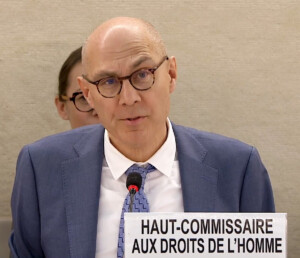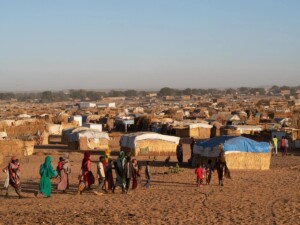UN report: Hundreds of children recruited by rebels, Sudan army
A new report by the UN Secretary-General details the deep impact of armed conflict on children in Sudan. It is the first report on children and armed conflict in the country published since the secession of South Sudan, and since the start of hostilities in South Kordofan and Blue Nile states.
A new report by the UN Secretary-General details the deep impact of armed conflict on children in Sudan. It is the first report on children and armed conflict in the country published since the secession of South Sudan, and since the start of hostilities in South Kordofan and Blue Nile states.
The UN verified the killing and maiming of close to 1,300 children, with a majority of child casualties (971) documented in Darfur. In all regions, hostilities between the Government and armed groups, including aerial bombardments, were the cause of the majority of child deaths and injuries from 2011 to 2016. Unexploded ordnance of war causing child casualties was another concern.
“Child recruitment and use declined during the period covered by the report,” declared Leila Zerrougui, Special Representative of the Secretary-General for Children and Armed Conflict. “However, boys and girls continued to be victims of grave violations committed by all parties to the conflict, including killing and maiming, sexual violence, and attacks on schools and hospitals.”
The UN confirmed that at least 372 children were victims of rape and sexual violence in Darfur. In most cases, children were raped by mostly unidentified perpetrators during attacks on their villages or while collecting wood or water in the vicinity of camps for displaced people.
“In Darfur, sexual violence remained a serious concern.”
Recruiting
More than two thirds of the 230 cases of recruitment of children presented in the report in South Kordofan, Blue Nile and Abyei were documented in the early stages of the conflict, with the Sudan People’s Liberation Movement-North (SPLM-N) responsible for the majority of verified cases, according to the report.
“…children, all boys, approximately 17 per cent of which were attributed to government forces (39 cases) and 76 per cent to armed groups (104 cases to SPLM-N, 70 to SPLA and 17 to unidentified armed elements).”
In Darfur, a total of 105 cases were documented: from 45 child recruitment cases in 2011 to one in 2016. The UN country task force witnessed an upsurge in the use of children in fights between tribal clashes in 2013, including in El Sereif Beni Hussein, Kabkabiya, and Saraf Omra localities in North Darfur.
“There are unverified allegations of grave violations by all armed parties.”
Attributing responsibility for these cases was not always possible, but approximately half of the cases in Darfur were attributed to government forces. Restrictions on access to conflict-affected areas impeded the researchers in verifying “allegations of grave violations committed by all parties to the conflict” during the reporting period.
Order against child soldiers
Beginning in 2014, the trends illustrate a decrease in the number of child recruitment cases, albeit with the new concern of cross-border recruitment and use of children by Sudanese and South Sudanese groups: the rebel SPLM-N and JEM, and the Sudan People’s Liberation Army-in Opposition in the South.
The slightly positive trend in recruitment and use of children – with fewer being recruited and used by parties to the conflict – is reflected in the signing of the recent Action Plan by the SPLM-N and renewed commitment by the rebel JEM to act against child recruitment.
The Sudanese government has promoted accountability by enacting laws to raise the age of recruitment into the national forces to 18, and the recruitment and use of children in armed forces and groups is criminalised under Sudanese law.
Bombings
Furthermore the researchers reported 46 attacks on schools in Darfur which were totally or partially destroyed and raided in aerial bombardment and during armed clashes. They also documented five attacks on schools in South Kordofan and Blue Nile and six attacks on hospitals in the so-called Two Areas.
Currently, government forces have retaken control of a number of areas formerly held by armed groups in Darfur's Jebel Marra Mountains. Despite the signing of the Doha Document for Peace in Darfur in 2011, further efforts to secure an inclusive peace deal have yielded limited results. As for the Two Areas, the Sudanese government and the rebel SPLM-N have extended their unilateral cessation of hostilities several times, however, both parties have accused the other of violating it by attacking its forces.
Read the Report of the UN Secretary-General on children and armed conflict in Sudan











 and then
and then